Beginner woodworking project: Imagine transforming simple wood into beautiful, functional creations. Woodworking is a rewarding craft that combines creativity, skill, and a touch of patience. This beginner’s guide will walk you through the fundamentals of woodworking, from choosing the right tools and materials to tackling your first project.
Whether you’re looking to build a simple birdhouse or a more intricate bookshelf, the process of woodworking is a journey of discovery and satisfaction. You’ll learn basic techniques, explore different types of wood, and gain confidence as you create projects that you’ll be proud to display. Let’s get started on your woodworking adventure!
Introduction to Woodworking
Woodworking is a craft and hobby that involves shaping and working with wood to create a variety of items, from furniture and toys to decorative objects and structural elements. It’s a rewarding activity that allows you to express your creativity and build something with your own hands.
Woodworking can be a relaxing and enjoyable pastime, but it’s also important to understand the basics of working with wood and to prioritize safety. This guide will provide you with a foundational understanding of woodworking, covering essential tools, materials, and safety practices.
Basic Woodworking Tools
The tools you need for woodworking will vary depending on the projects you want to undertake. However, there are some basic tools that are essential for any beginner woodworker.
- Hand Saw: Used for cutting wood to length and shape.
- Hammer: Used for driving nails and securing wood joints.
- Screwdriver: Used for driving screws.
- Measuring Tape: Used for measuring wood and making accurate cuts.
- Pencil: Used for marking wood before cutting.
- Level: Used for ensuring surfaces are level.
- Clamps: Used to hold pieces of wood together while gluing or fastening.
- Sandpaper: Used for smoothing wood surfaces.
Woodworking Materials
Wood is the primary material used in woodworking. Different types of wood have unique properties, such as hardness, grain patterns, and durability.
- Softwoods: Pine, fir, and cedar are examples of softwoods. They are generally less expensive and easier to work with than hardwoods.
- Hardwoods: Oak, maple, and cherry are examples of hardwoods. They are more durable and resistant to wear and tear, but they can be more challenging to work with.
- Plywood: A sheet material made of thin layers of wood veneer glued together. Plywood is strong, stable, and relatively inexpensive.
- MDF (Medium-Density Fiberboard): A manufactured wood product made from wood fibers that are bonded together with resin. MDF is smooth, dense, and can be easily shaped.
Safety Precautions for Woodworking
Safety is paramount when working with woodworking tools and materials.
Always wear eye protection when using woodworking tools.
- Use sharp tools: Dull tools can be dangerous and lead to accidents. Always keep your tools sharp and in good condition.
- Avoid loose clothing: Loose clothing can get caught in woodworking tools. Wear close-fitting clothing and avoid wearing jewelry while woodworking.
- Keep your work area clean: A cluttered work area can lead to accidents. Clean up sawdust and debris regularly.
- Use proper lifting techniques: Heavy wood can cause injuries if not lifted correctly. Use proper lifting techniques to avoid back strain.
- Use safety equipment: Wear gloves, ear protection, and a dust mask when appropriate.
- Be aware of your surroundings: Be aware of your surroundings and keep your work area clear of obstacles.
Beginner Woodworking Projects
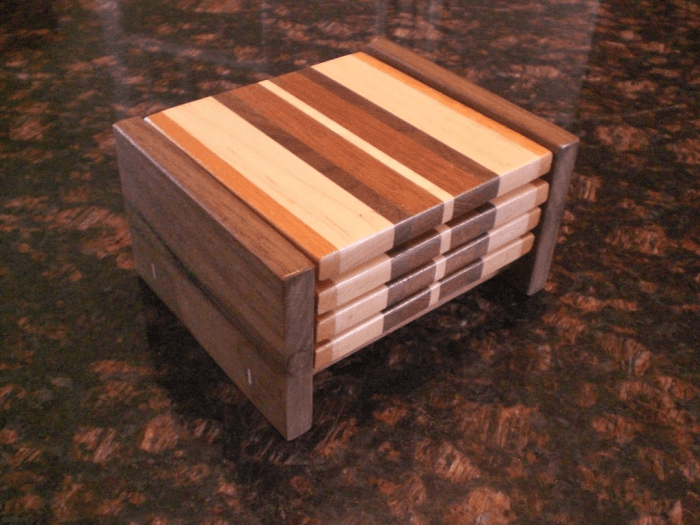
Starting your woodworking journey can be exciting and rewarding. There are numerous simple and beginner-friendly projects that can help you gain confidence and build essential skills. This section will guide you through some easy-to-make projects, suitable for those just starting out.
Easy Woodworking Projects for Beginners
These projects are ideal for beginners as they require minimal tools and are relatively quick to complete. They provide a great opportunity to learn basic woodworking techniques and get comfortable working with wood.
- Cutting Board: A cutting board is a practical and useful project that can be made from a single piece of wood. You’ll learn how to cut wood to size, sand it smooth, and apply a finish.
- Skills Required: Measuring, cutting, sanding, finishing.
- Tools Needed: Saw, measuring tape, sandpaper, wood glue, finish.
- Simple Shelf: Building a shelf is another beginner-friendly project that can be customized to fit your needs. It’s a great way to learn how to assemble pieces of wood and attach them securely.
- Skills Required: Measuring, cutting, drilling, assembling, finishing.
- Tools Needed: Saw, measuring tape, drill, screws, wood glue, finish.
- Wooden Box: A wooden box is a versatile project that can be used for storage, gifts, or decoration. It’s a great way to learn about joinery techniques and how to create a sturdy box.
- Skills Required: Measuring, cutting, joinery, finishing.
- Tools Needed: Saw, measuring tape, clamps, wood glue, finish.
- Coaster Set: Making a set of coasters is a fun and easy project that allows you to experiment with different wood species and finishes.
- Skills Required: Measuring, cutting, sanding, finishing.
- Tools Needed: Saw, measuring tape, sandpaper, wood glue, finish.
Intermediate Woodworking Projects
These projects require a bit more experience and skill but are still manageable for beginners who have mastered the basics.
- Small Table: Building a small table is a rewarding project that allows you to practice your woodworking skills and create a functional piece of furniture.
- Skills Required: Measuring, cutting, joinery, assembly, finishing.
- Tools Needed: Saw, measuring tape, drill, screws, wood glue, clamps, finish.
- Birdhouse: Building a birdhouse is a fun and creative project that can be customized to your liking. It’s a great way to learn about different woodworking techniques and create a beautiful and functional piece.
- Skills Required: Measuring, cutting, joinery, assembly, finishing.
- Tools Needed: Saw, measuring tape, drill, screws, wood glue, finish.
- Wooden Sign: Making a wooden sign is a great way to personalize your home or garden. You’ll learn how to use a router to create decorative edges and how to apply paint or stain.
- Skills Required: Measuring, cutting, routing, finishing.
- Tools Needed: Saw, measuring tape, router, sandpaper, paint or stain.
Advanced Woodworking Projects
These projects are more challenging and require advanced woodworking skills and knowledge.
- Chair: Building a chair is a complex and rewarding project that requires a high level of skill and precision. It’s a great way to test your woodworking abilities and create a unique and functional piece of furniture.
- Skills Required: Measuring, cutting, joinery, assembly, finishing, upholstery (optional).
- Tools Needed: Saw, measuring tape, drill, screws, wood glue, clamps, finish, upholstery tools (optional).
- Cabinet: Building a cabinet is a challenging project that requires a good understanding of woodworking techniques and principles. It’s a great way to showcase your skills and create a custom piece of storage.
- Skills Required: Measuring, cutting, joinery, assembly, finishing.
- Tools Needed: Saw, measuring tape, drill, screws, wood glue, clamps, finish, router (optional).
- Wooden Toy: Creating a wooden toy is a fun and rewarding project that allows you to unleash your creativity and build something special for a child.
- Skills Required: Measuring, cutting, joinery, assembly, finishing, sanding.
- Tools Needed: Saw, measuring tape, drill, screws, wood glue, clamps, finish, sandpaper.
Choosing the Right Wood
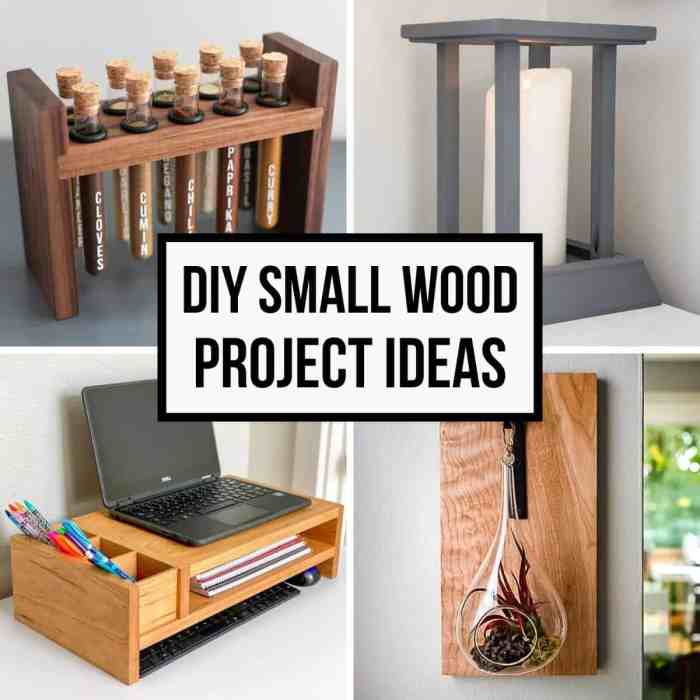
Choosing the right wood is a crucial step in any woodworking project. The type of wood you choose will significantly impact the project’s final look, durability, and workability.
Types of Wood
The world of wood offers a wide variety of species, each with its unique properties and characteristics.
- Hardwoods: Hardwoods are typically denser and stronger than softwoods, making them ideal for furniture, flooring, and structural applications. Some common hardwoods include:
- Oak: Known for its strength, durability, and beautiful grain patterns, oak is a popular choice for furniture, flooring, and cabinets.
- Maple: Maple is prized for its hardness, smooth grain, and ability to take a fine finish. It’s commonly used for furniture, cabinets, and cutting boards.
- Cherry: Cherry wood is known for its rich reddish-brown color, which deepens with age. It’s often used for furniture, cabinets, and decorative items.
- Walnut: Walnut is a beautiful hardwood with a distinctive dark brown color and attractive grain patterns. It’s frequently used for furniture, cabinets, and gunstocks.
- Mahogany: Mahogany is a strong, durable hardwood with a reddish-brown hue. It’s commonly used for furniture, boats, and musical instruments.
- Softwoods: Softwoods are generally lighter and less dense than hardwoods, making them easier to work with. They’re often used for construction, framing, and general woodworking projects. Some common softwoods include:
- Pine: Pine is a softwood known for its affordability and ease of working. It’s often used for framing, construction, and furniture.
- Cedar: Cedar is a softwood with a distinctive aroma and natural insect-repelling properties. It’s often used for outdoor furniture, siding, and crafts.
- Fir: Fir is a strong and durable softwood that’s often used for framing, construction, and plywood.
- Spruce: Spruce is a lightweight and resonant softwood, making it a popular choice for musical instruments, crafts, and construction.
Essential Woodworking Tools
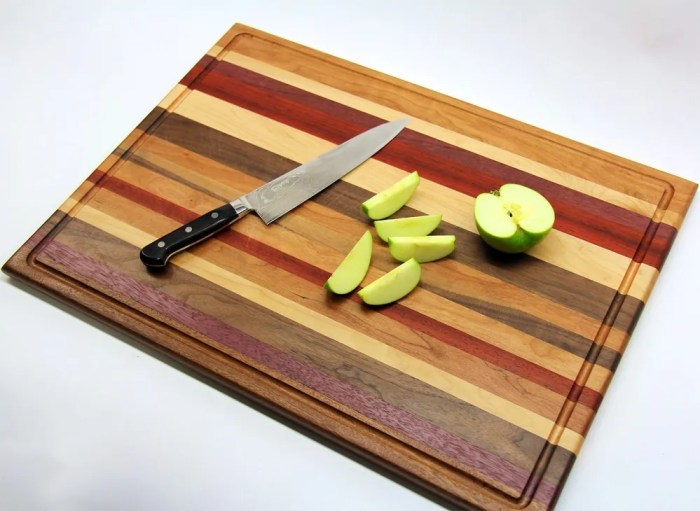
You’ll need the right tools to get started with woodworking. A basic set of tools will allow you to tackle a variety of projects. The tools you choose will depend on your budget, the type of woodworking you want to do, and the projects you plan to build.
Hand Tools
Hand tools are essential for any woodworker. They are versatile and can be used for a variety of tasks. Some of the most essential hand tools include:
- Saw: A saw is used to cut wood. There are many different types of saws, each designed for a specific purpose. For beginners, a handsaw or a coping saw will be sufficient. A handsaw is used for straight cuts, while a coping saw is used for curved cuts. The teeth on a saw are designed to cut in one direction, so you will need to use a sawing motion to cut through the wood.
- Hammer: A hammer is used to drive nails and to strike chisels. A claw hammer is the most common type of hammer used in woodworking. The claw is used to remove nails. When using a hammer, it is important to use a smooth, even swing. Avoid hitting the wood too hard, as this can damage the wood.
- Chisel: A chisel is used to shape and carve wood. Chisels come in a variety of sizes and shapes. A sharp chisel will cut through the wood easily. When using a chisel, it is important to use a mallet or a hammer to strike the chisel. Never strike the chisel directly with a hammer, as this can damage the chisel.
- Plane: A plane is used to smooth and flatten wood. Planes come in a variety of sizes and shapes. A block plane is a small plane that is used for smoothing small areas of wood. A jack plane is a larger plane that is used for smoothing larger areas of wood. When using a plane, it is important to use a smooth, even stroke. Avoid pressing too hard on the plane, as this can damage the wood.
- Screwdriver: A screwdriver is used to drive screws. Screwdrivers come in a variety of sizes and shapes. A Phillips screwdriver is used for driving Phillips-head screws. A flathead screwdriver is used for driving flathead screws. When using a screwdriver, it is important to use the right size screwdriver for the screw. A too-small screwdriver can damage the screw, while a too-large screwdriver can damage the wood.
- Measuring Tools: Measuring tools are essential for accurate woodworking. Some of the most essential measuring tools include:
- Tape Measure: A tape measure is used to measure length and width. Tape measures come in a variety of lengths. A 25-foot tape measure is a good choice for most woodworking projects.
- Ruler: A ruler is used to measure short distances. Rulers come in a variety of lengths. A 12-inch ruler is a good choice for most woodworking projects.
- Protractor: A protractor is used to measure angles. Protractors come in a variety of sizes. A 6-inch protractor is a good choice for most woodworking projects.
Power Tools
Power tools can make woodworking much easier and faster. However, it is important to use power tools safely. Always wear safety glasses and gloves when using power tools. Here are some of the most essential power tools for beginners:
- Drill: A drill is used to drill holes in wood. Drills come in a variety of sizes and speeds. A cordless drill is a good choice for most woodworking projects. When using a drill, it is important to use the right size drill bit for the hole you are drilling. A too-small drill bit can damage the wood, while a too-large drill bit can make the hole too big.
- Sander: A sander is used to smooth and finish wood. Sanders come in a variety of sizes and shapes. A random orbit sander is a good choice for most woodworking projects. When using a sander, it is important to use the right type of sandpaper for the job. A fine-grit sandpaper will provide a smooth finish, while a coarse-grit sandpaper will remove more material. Be careful not to sand too much, as this can damage the wood.
- Jigsaw: A jigsaw is used to cut curves and shapes in wood. Jigsaws come in a variety of sizes and speeds. A cordless jigsaw is a good choice for most woodworking projects. When using a jigsaw, it is important to use the right type of blade for the job. A fine-tooth blade will provide a clean cut, while a coarse-tooth blade will cut through the wood more quickly. Be careful not to cut too quickly, as this can damage the wood.
Safety Equipment, Beginner woodworking project
Safety is paramount when woodworking. It is important to wear the right safety equipment to protect yourself from injury. Some of the most essential safety equipment includes:
- Safety Glasses: Safety glasses are essential for protecting your eyes from flying debris. Always wear safety glasses when using power tools and when working with sharp tools.
- Gloves: Gloves are essential for protecting your hands from splinters and sharp edges. Always wear gloves when handling wood and when using power tools.
- Dust Mask: A dust mask is essential for protecting your lungs from sawdust. Always wear a dust mask when sanding and when using power tools that create dust.
- Ear Protection: Ear protection is essential for protecting your ears from the noise of power tools. Always wear ear protection when using power tools.
Woodworking Techniques
Woodworking techniques are the foundation of any woodworking project, whether you’re a beginner or a seasoned pro. Understanding these techniques will allow you to create beautiful and functional pieces of furniture, decor, and more.
Measuring and Marking
Accurate measuring and marking are essential for ensuring that your woodworking project comes out to the desired size and shape. Here are some common methods for measuring and marking wood:
- Measuring Tape: A measuring tape is a versatile tool for measuring lengths and widths. When measuring, ensure that the tape is held straight and taut to avoid inaccuracies.
- Ruler: A ruler is useful for measuring shorter distances and for drawing straight lines. A combination square is another handy tool for measuring and marking straight lines.
- Marking Gauge: A marking gauge is used to mark parallel lines along the edge of a piece of wood. This tool is especially useful for creating consistent cuts, such as when making tenons for joinery.
- Pencil: A pencil is essential for marking the wood where you need to make cuts or drill holes. Use a sharp pencil to create clear and precise marks.
Cutting and Shaping
Cutting and shaping wood are essential for creating the desired form for your project. There are many different tools that can be used for cutting and shaping wood, each with its own advantages and disadvantages.
- Hand Saw: A hand saw is a versatile tool for cutting wood, but it requires practice to master. A crosscut saw is used for cutting across the grain of the wood, while a rip saw is used for cutting along the grain.
- Circular Saw: A circular saw is a power tool that is used for making straight cuts. It is a faster and more efficient way to cut wood than a hand saw.
- Jigsaw: A jigsaw is a power tool that is used for making curved cuts. It is a versatile tool that can be used for a variety of cutting tasks.
- Router: A router is a power tool that is used for shaping wood. It can be used to create decorative edges, rabbets, and grooves.
- Chisel: A chisel is a hand tool that is used for carving and shaping wood. It is a versatile tool that can be used for a variety of tasks, such as creating mortises and tenons.
Joining Wood
Joining wood is an important part of woodworking, as it allows you to create sturdy and durable structures. There are many different ways to join wood, each with its own advantages and disadvantages.
- Butt Joint: A butt joint is the simplest type of joint, where two pieces of wood are joined end to end. It is a weak joint and is often used for decorative purposes only.
- Lap Joint: A lap joint is a stronger joint than a butt joint, where one piece of wood overlaps the other. It is a good choice for joining pieces of wood at right angles.
- Mortise and Tenon Joint: A mortise and tenon joint is a strong and durable joint that is often used for furniture making. A mortise is a rectangular hole cut into one piece of wood, and a tenon is a rectangular projection cut into the other piece of wood. The tenon fits into the mortise, creating a strong joint.
- Dovetail Joint: A dovetail joint is a very strong and decorative joint that is often used for furniture making. It is a complex joint to make, but it is worth the effort for its strength and beauty.
- Glue: Glue is an essential tool for joining wood. It provides a strong bond that holds the pieces of wood together. There are many different types of glue available, so it is important to choose the right type for your project.
- Screws: Screws are a versatile way to join wood. They can be used to create strong joints and are easy to remove if necessary. Use the appropriate screw size and length for the project.
- Nails: Nails are a quick and easy way to join wood, but they are not as strong as screws or glue. Use the appropriate nail size and type for the project.
Finishing Wood
Finishing wood is the final step in woodworking, and it protects the wood from damage and enhances its appearance. There are many different ways to finish wood, each with its own advantages and disadvantages.
- Sanding: Sanding is an essential step in wood finishing. It smoothes out the surface of the wood and prepares it for the finish. Use different grits of sandpaper to achieve a smooth and even finish.
- Stain: Stain is used to color the wood without obscuring its grain. There are many different types of stain available, including oil-based, water-based, and gel stains.
- Paint: Paint is used to cover the wood with a solid color. It is a good choice for hiding imperfections in the wood or for creating a specific color.
- Varnish: Varnish is a clear finish that protects the wood from water and scratches. It is available in both gloss and matte finishes.
- Polyurethane: Polyurethane is a durable finish that protects the wood from water, scratches, and UV rays. It is available in both gloss and matte finishes.
Project Examples: Beginner Woodworking Project
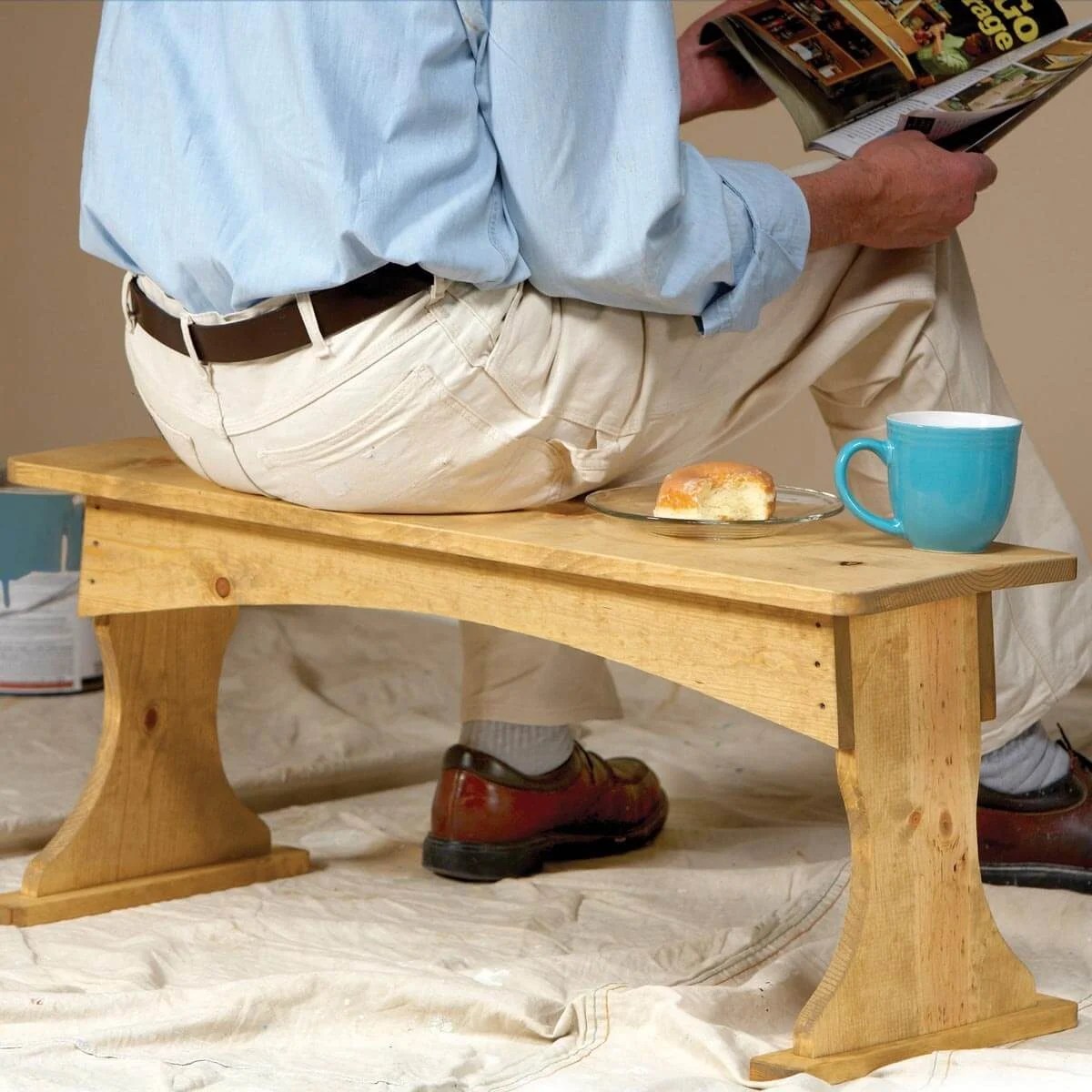
Now that you have a basic understanding of woodworking tools, techniques, and wood selection, let’s dive into some beginner-friendly project ideas. These projects are designed to help you build confidence and hone your skills while creating something useful or decorative.
Simple Wooden Shelf
This project is a great introduction to woodworking as it involves basic cuts, assembly, and finishing techniques. You’ll learn how to use a saw, drill, and sander, along with applying a protective finish.
Materials:
* Wood: 1×6 pine boards (for shelves)
* Wood: 1×4 pine boards (for sides)
* Wood glue
* Wood screws
* Wood stain or paint (optional)
* Sandpaper (various grits)
Tools:
* Saw (circular or hand saw)
* Drill
* Screwdriver
* Sandpaper
* Measuring tape
* Pencil
* Clamps (optional)
* Safety glasses
* Dust mask
Steps:
1. Cut the wood: Measure and cut the 1×6 boards to the desired length for the shelves. Cut the 1×4 boards to the desired length and height for the sides.
2. Sand the wood: Sand all the edges and surfaces of the wood to smooth out any rough spots. Start with a coarse grit sandpaper and finish with a fine grit.
3. Assemble the shelf: Use wood glue and screws to attach the sides to the shelves. Make sure the shelves are level and secure.
4. Apply finish: (Optional) If desired, apply a stain or paint to the shelf to protect the wood and enhance its appearance.
Visual Guide:
Step 1:
* Image: Show a person measuring a 1×6 board with a measuring tape and marking it with a pencil.
* Description: The first step is to measure and cut the 1×6 boards to the desired length for the shelves.
Step 2:
* Image: Show a person using a circular saw to cut the marked 1×6 board.
* Description: Use a saw to cut the boards to the desired length.
Step 3:
* Image: Show a person sanding a 1×6 board with sandpaper.
* Description: Sand all the edges and surfaces of the wood to smooth out any rough spots.
Step 4:
* Image: Show a person using a drill to create pilot holes in the wood before screwing.
* Description: Use a drill to create pilot holes in the wood before screwing. This will prevent the wood from splitting.
Step 5:
* Image: Show a person applying wood glue to the edges of the wood.
* Description: Apply wood glue to the edges of the wood.
Step 6:
* Image: Show a person using a screwdriver to attach the sides to the shelves.
* Description: Use screws to attach the sides to the shelves. Make sure the shelves are level and secure.
Step 7:
* Image: Show a person applying a stain or paint to the shelf.
* Description: (Optional) Apply a stain or paint to the shelf to protect the wood and enhance its appearance.
Resources and Inspiration
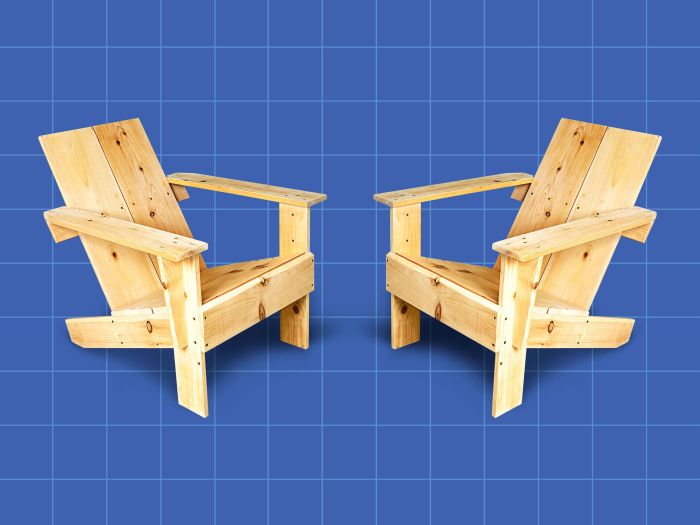
The journey of woodworking is filled with endless possibilities, and it’s essential to tap into the wealth of resources available to fuel your creativity and expand your skills. This section will guide you to online platforms, books, and inspiring woodworking projects that will spark your imagination and guide your woodworking journey.
Online Resources
Online resources offer a treasure trove of information, tutorials, and communities for beginner woodworkers. Here are a few excellent starting points:
- Woodworking for Mere Mortals: This website, created by a woodworker named Steve Johnson, offers a comprehensive library of woodworking projects, tutorials, and tips for all skill levels. You can find step-by-step instructions, detailed explanations, and helpful advice to guide you through your woodworking projects.
- Popular Woodworking: This website and magazine are renowned for their high-quality content, showcasing woodworking projects, techniques, and profiles of renowned woodworkers. You can access articles, videos, and online forums to learn from experts and connect with other woodworkers.
- YouTube: YouTube is a fantastic resource for woodworking tutorials, with channels dedicated to teaching specific skills, techniques, and projects. Some popular channels include “The Wood Whisperer,” “Paul Sellers,” and “Woodworking for Mere Mortals.”
Inspiring Woodworking Projects
Exploring inspiring woodworking projects can ignite your passion and motivate you to create your own masterpieces. Here are a few examples:
- Mid-Century Modern Furniture: This style, known for its clean lines, simple forms, and use of natural materials, continues to inspire woodworkers. A classic example is the Eames Lounge Chair, a timeless design that showcases the beauty of wood and craftsmanship.
- Rustic Farmhouse Decor: This style embraces natural textures and reclaimed materials, creating a warm and inviting atmosphere. You can find inspiration in projects like farmhouse tables, rustic shelves, and decorative signs.
- Contemporary Woodworking: This style often pushes the boundaries of traditional woodworking, incorporating innovative techniques and materials. You can find examples in projects like modern sculptures, intricate wood carvings, and furniture with unique shapes and forms.
Books for Beginner Woodworkers
Books provide a structured approach to learning woodworking fundamentals, techniques, and project ideas. Here are a few recommended books for beginners:
- “The Complete Illustrated Guide to Woodworking” by Editors of Creative Publishing: This comprehensive guide covers all aspects of woodworking, from choosing the right tools to finishing techniques. It includes detailed illustrations and step-by-step instructions to help you master woodworking basics.
- “Woodworking for Dummies” by Jeff Strong: This book offers a beginner-friendly approach to woodworking, covering essential tools, techniques, and projects. It’s a great starting point for anyone new to woodworking.
- “The Woodworking Handbook” by Rex Miller: This handbook provides a wealth of information on wood types, tools, techniques, and project ideas. It’s a valuable resource for both beginners and experienced woodworkers.
Final Wrap-Up
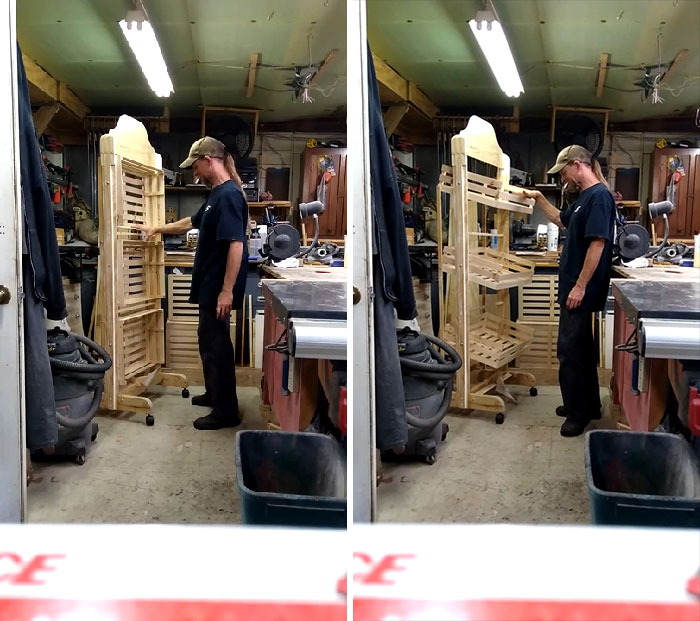
With a little practice and the right tools, you can turn your woodworking dreams into reality. Remember, the journey is just as important as the destination. So, embrace the learning process, experiment with different techniques, and don’t be afraid to make mistakes – they are part of the learning experience. Enjoy the process of creating, and soon you’ll be crafting stunning woodworking projects that will impress yourself and others.
FAQ Explained
What kind of wood should I start with?
Softwoods like pine or cedar are generally easier to work with for beginners. They are less expensive and more forgiving for making mistakes.
What are the essential tools for a beginner woodworker?
A hand saw, hammer, measuring tape, pencil, and a set of screwdrivers are great starting tools. As you progress, you can add power tools like a drill and sander.
Where can I find woodworking plans?
There are tons of free plans online, and many woodworking books and magazines offer detailed instructions. You can also find plans specifically designed for beginners.
Is woodworking dangerous?
Woodworking can be dangerous if safety precautions are not followed. Always wear safety glasses, use sharp tools correctly, and avoid distractions while working.
A mailbox is a great beginner woodworking project because it’s relatively small and doesn’t require a lot of intricate cuts. You can find some really cool mailbox woodworking plans online, and many of them are designed for beginners. Once you’ve mastered the mailbox, you can move on to more challenging projects, like building a birdhouse or a small table.
